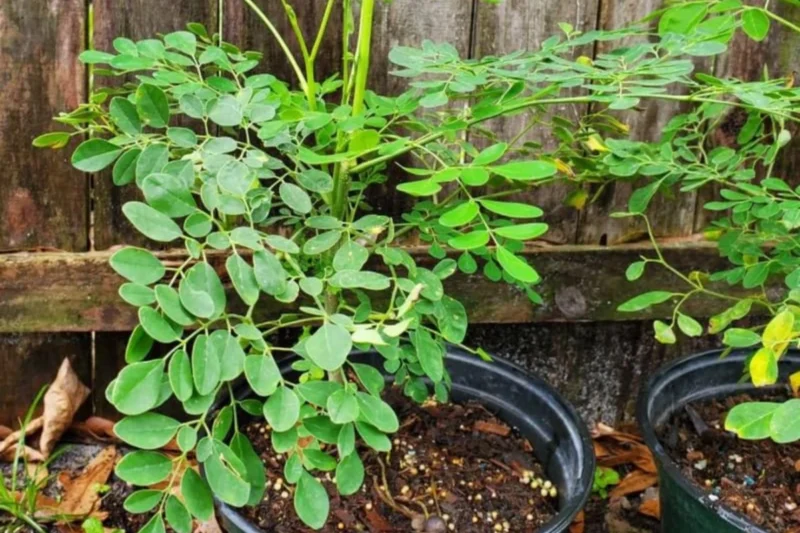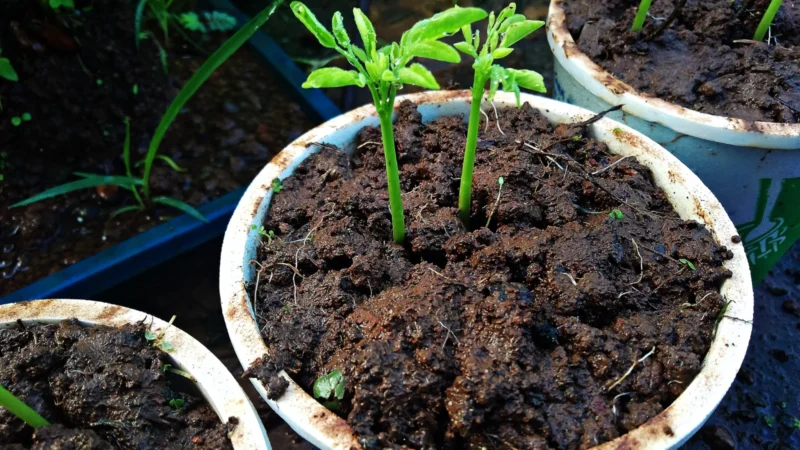Are you tired of spending money on pricey “superfood” powders, only to wonder if they’re really fresh or effective? I’ve been there. I kept hearing about expensive green blends and pills, but none offered the personal touch and certainty I craved. That’s why I decided to grow Moringa Oleifera—also called the Drumstick tree—in my own backyard. In this post, I’ll show you exactly why homegrown Moringa can be a game-changer for your health and lifestyle. Trust me, once you discover the benefits of this nutrient-dense superfood, you’ll want to start planting your own seeds right away.
1. It’s Packed with Essential Nutrients
One of the main reasons I love to grow Moringa at home is because it’s rich in key vitamins like Vitamin A, C, E, and minerals that promote overall wellness. The antioxidant-rich leaves are known to help protect our cells from damage and may even boost your health by supporting your immune system.
-
Nutrient-Dense Superfood: Moringa contains a wide array of vitamins, minerals, and amino acids, making it a perfect plant-based protein source.
-
Easy to Incorporate: You can add Moringa leaves to soups, salads, smoothies, or simply brew them into a tea.
-
Practical Daily Boost: Instead of buying expensive supplements, you’ll have fresh greens right in your yard.
When I realized how many homegrown greens I could harvest each week, I immediately saw a difference in my energy level. It felt good to rely on my own DIY food production rather than store-bought powders. After all, it’s comforting to know exactly where your food comes from.

2. Moringa Is Surprisingly Simple to Grow
I get it—starting a new plant can seem overwhelming. But let me assure you, Moringa Oleifera is one of the easiest trees I’ve ever planted. As an Africa and Asia native plant, Moringa thrives in a tropical/subtropical climate, but it can also adapt to various regions with the right care.
-
Adaptable to USDA Zones: Although Moringa does best in USDA Zones 9 to 11, you can still grow it in cooler climates by keeping it in a pot or bringing it indoors when temperatures drop.
-
Minimal Maintenance: It doesn’t demand constant watering, which is great news if you’re as forgetful as I can sometimes be. A regular watering schedule in the first few months is usually enough.
-
Resilient Nature: Once it’s established, Moringa’s deep roots help it tolerate drought conditions better than many other plants.
If you’re brand new to sustainable home gardening, starting with Moringa is a no-brainer. You don’t need fancy equipment. A sunny spot, well-drained soil, and a little TLC will get your seedlings going strong.

3. It Offers Endless Culinary Possibilities
Have you ever added something new to your meals and immediately noticed a difference? That’s how I felt when I started using fresh Moringa leaves. The flavor is mild—some say it’s slightly earthy—so it blends easily with many dishes.
-
Moringa Smoothies: Toss a handful of antioxidant-rich leaves into your morning smoothie for a burst of vitamins and plant-based protein.
-
Soups and Stews: Add Moringa leaves or even the tender pods (hence the name “Drumstick tree”) to your favorite soup recipes for extra flavor.
-
Herbal Tea: Dry the leaves and steep them. Not only does the tea taste refreshing, but it’s also a great way to unwind after a busy day.
This versatility saves me a lot of time. I no longer need multiple superfoods to get the nutrients I need. With homegrown Moringa, I can explore different recipes and experiment with new flavors. If you want more ideas on how to use fresh herbs in your cooking, check out my beginner’s guide to kitchen herbs for some fun tips and recipes.
4. Growing Moringa Supports Sustainability
If you’re like me, you care about the environment and want to make choices that help our planet. By deciding to grow Moringa at home, you’re not only taking charge of your own health, but also contributing to a more sustainable home gardening practice.
-
Less Packaging and Waste: You won’t have to deal with plastic containers or extra transportation costs from buying packed supplements.
-
Lower Carbon Footprint: Every time you grow your own food—especially a productive tree like Moringa—you reduce the need for commercial farming methods that often rely on heavy machinery.
-
Natural Air Purifier: Trees help clean the air around your home, creating a fresher environment.
I used to rely on store-bought powders, which added to my weekly trash load. Now, I enjoy DIY food production right in my backyard, and any leaves I don’t eat or dry for later become compost to enrich my garden soil.

5. It’s Cost-Effective and Promotes Self-Reliance
Ever felt guilty about spending a chunk of your paycheck on expensive “superfood” capsules? I know the feeling. That’s when I realized I could buy Moringa seeds once and reap continuous benefits for years.
-
Long-Term Savings: While you might pay a little upfront for buying Moringa seeds or saplings, the ongoing harvest of fresh leaves more than makes up for that cost.
-
DIY Supplements: By drying and powdering the leaves myself, I no longer spend money on packaged Moringa products.
-
Empowering Experience: There’s something special about growing a nutrient-dense superfood like Moringa on your own. You’ll feel a sense of accomplishment each time you pluck fresh leaves.
From personal experience, every time I see new leaves sprouting, I’m reminded of how easy and rewarding it is to be in charge of my own homegrown Moringa. It’s a small step towards being more self-reliant in my daily life.
Bonus: Tips for Growing Moringa in Various Climates
While Moringa thrives in warmer regions, there are ways to make it work in cooler or drier climates too. Here’s what I usually recommend:
-
Select the Right Variety: There are multiple species within the Moringa family. Stick to Moringa Oleifera for the highest chance of success.
-
Consider Indoor Planting: If you live in an area prone to frost, grow your tree in a pot so you can bring it inside during cold snaps.
-
Soil and Drainage: Sandy, well-drained soil is ideal. If the roots stay wet for too long, they might rot.
-
Sunlight: Give your Moringa at least six hours of sunlight each day for best leaf production.
I’ve grown Moringa in both a large container and directly in the ground. Both methods worked. The key is finding the balance of water, sunlight, and room for the roots to expand.
-
If you want more tips on sustainable home gardening, I’ve compiled a guide with simple steps to get you started.
-
For other homegrown greens ideas, check out my post on growing moringa in pots, where I share insights on easy-to-grow crops.
These internal links help you explore more ways to create a self-sufficient and eco-friendly lifestyle without leaving your home.
Conclusion: Ready to Grow Your Own Moringa?
I hope this post has shown you how beneficial it can be to grow Moringa at home. It’s not just another trend—it’s a powerful, plant-based protein source that offers antioxidant-rich leaves loaded with Vitamin A, C, E, while helping you save money and reduce waste. Whether you’re new to gardening or already a green thumb, Moringa is a wonderful option for boosting your diet and your sense of well-being.
Here’s a quick recap of the top 5 reasons:
-
Rich in Essential Nutrients
-
Easy to Grow and Maintain
-
Versatile for Various Recipes
-
Supports a Sustainable Lifestyle
-
Cost-Effective and Empowers Self-Reliance
My final tip is to buy Moringa seeds from a reliable source, plant them in a sunny spot, and watch your Drumstick tree flourish. Soon, you’ll be harvesting fresh leaves packed with vitamins to help boost your health, all from your very own yard. So why wait? Start planting today, enjoy those homegrown greens, and feel the difference a simple seed can make in your life.
